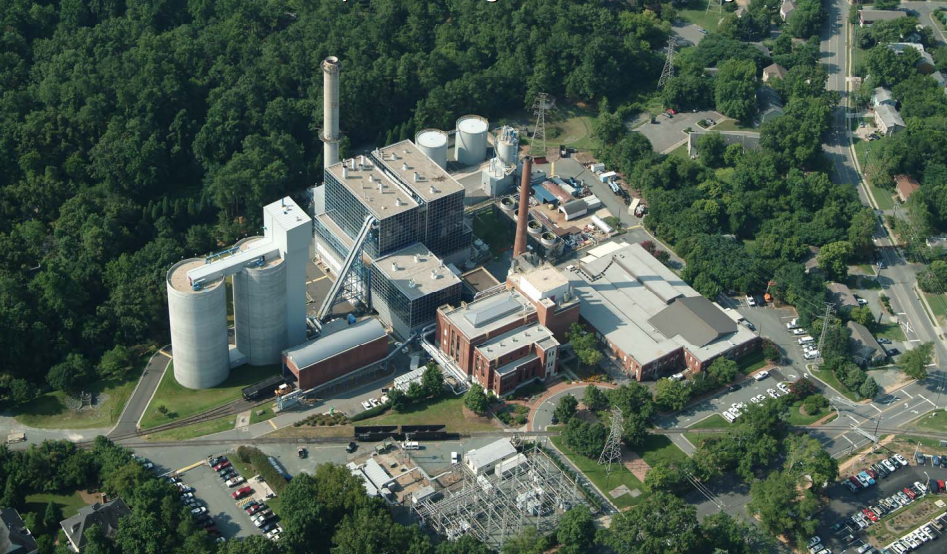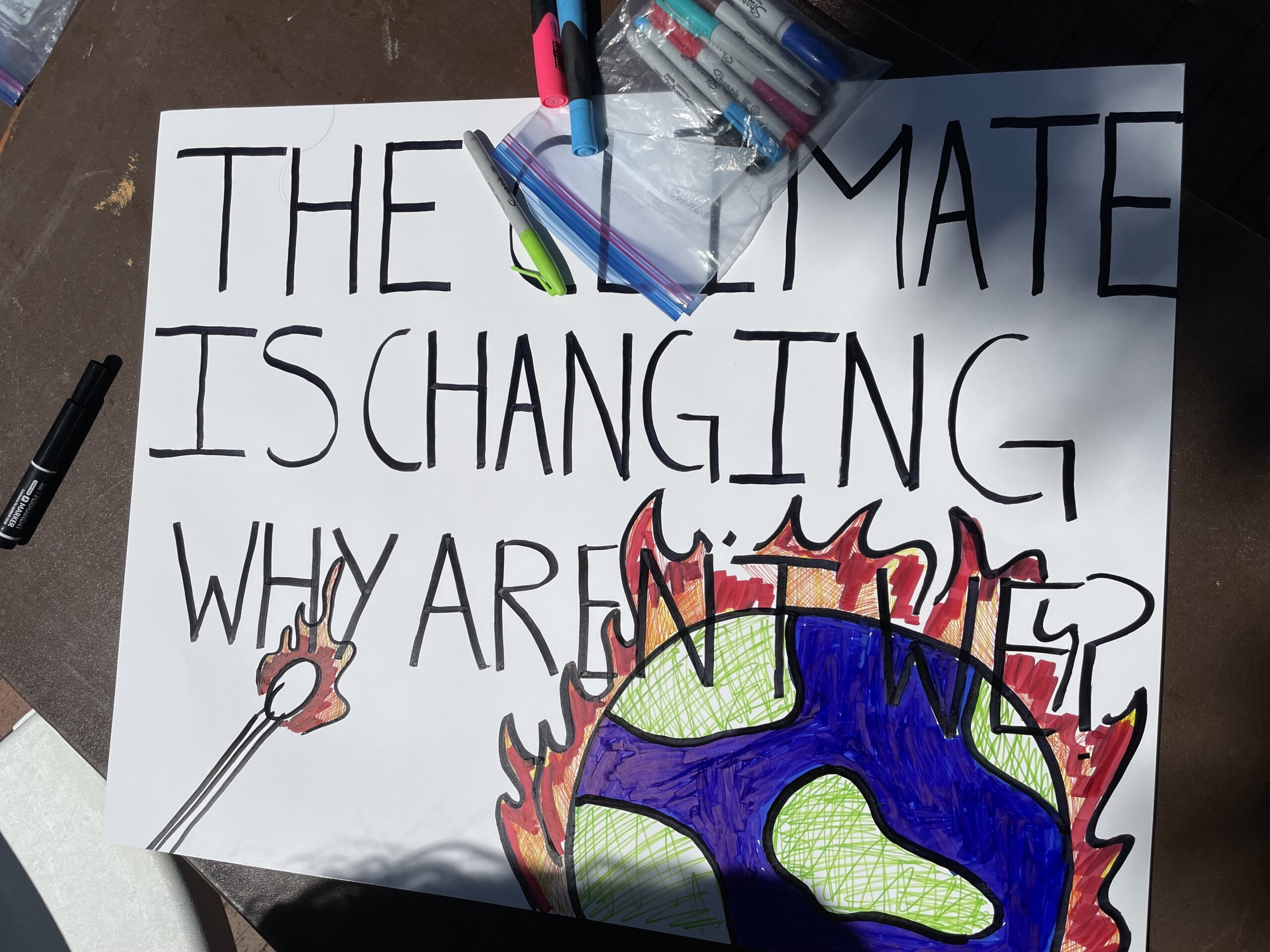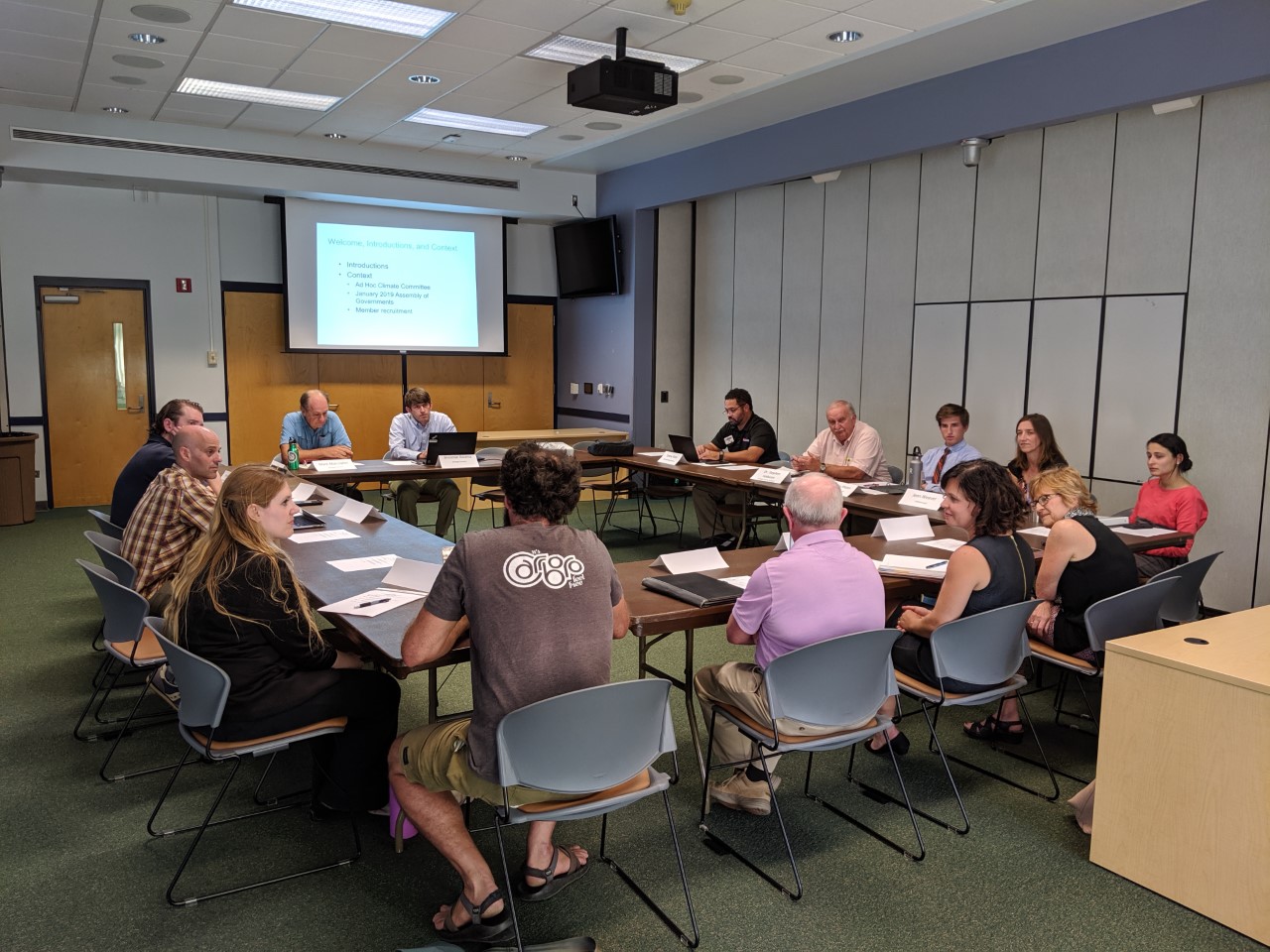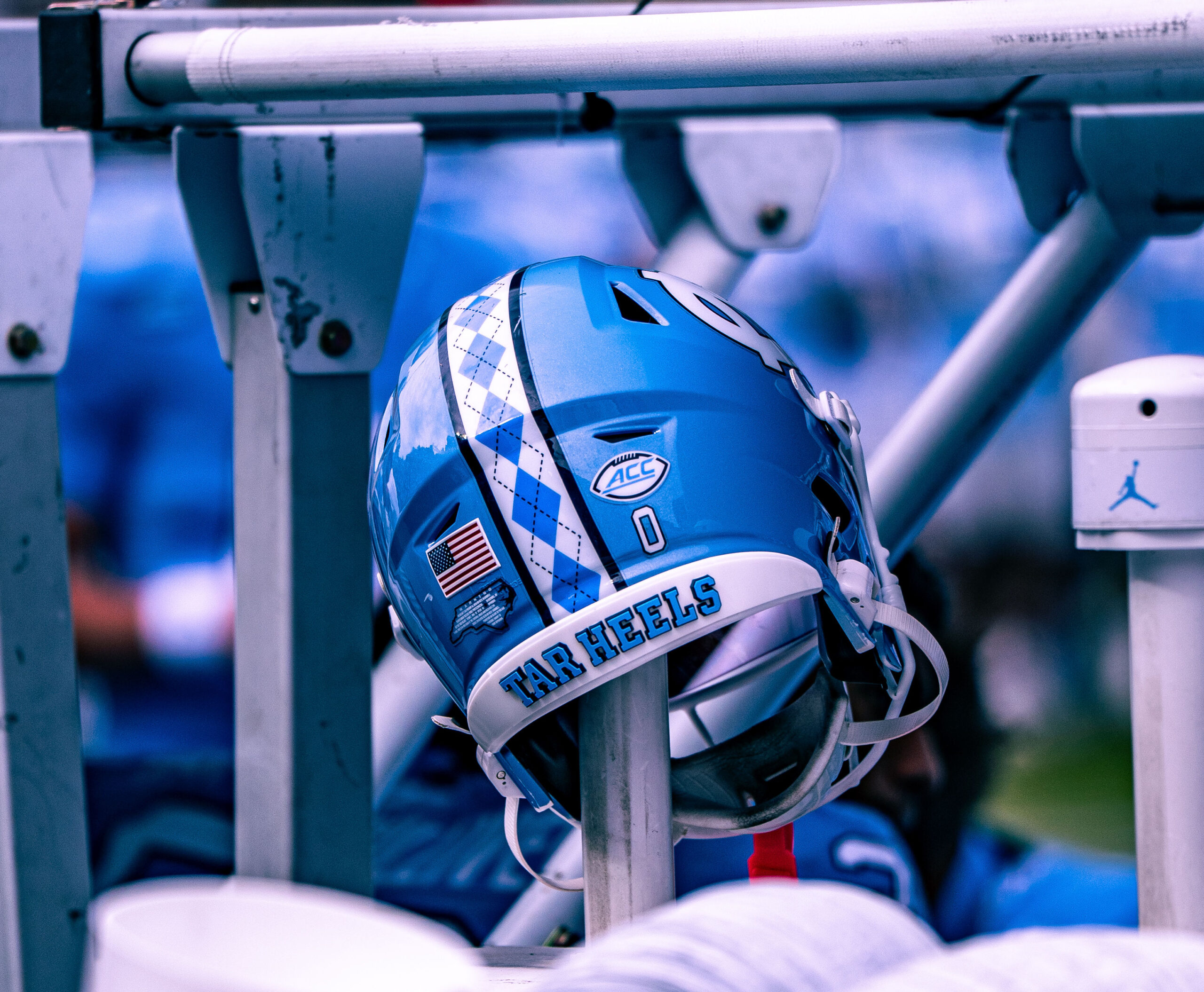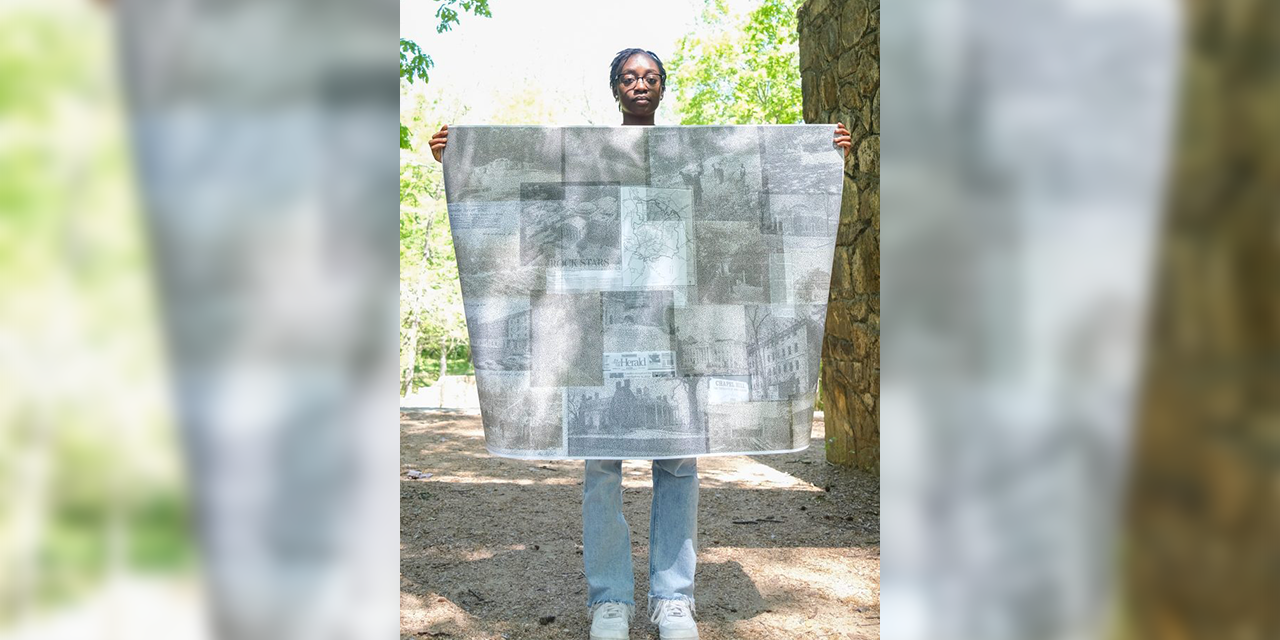Maps are storytellers, but they can exclude certain narratives.
UNC graduate student Fowota Mortoo said that’s the case for Chapel Hill’s Black builders. Although instrumental in designing and constructing UNC’s buildings, walls, and pathways, she said their contributions to the university often go unnoticed. Her 12-square-foot map of UNC became a way to look not only at the history of campus buildings, but the local faces who built them.
“The four families that I focused on were the Jones, Barbee, Blacknell, and Johnson families,” Mortoo recently told 97.9 The Hill. “I was interested in looking at The Carolina Inn, The Forest Theatre, the dentistry school, and sort of piecing together these specific families’ connections to those specific places.”
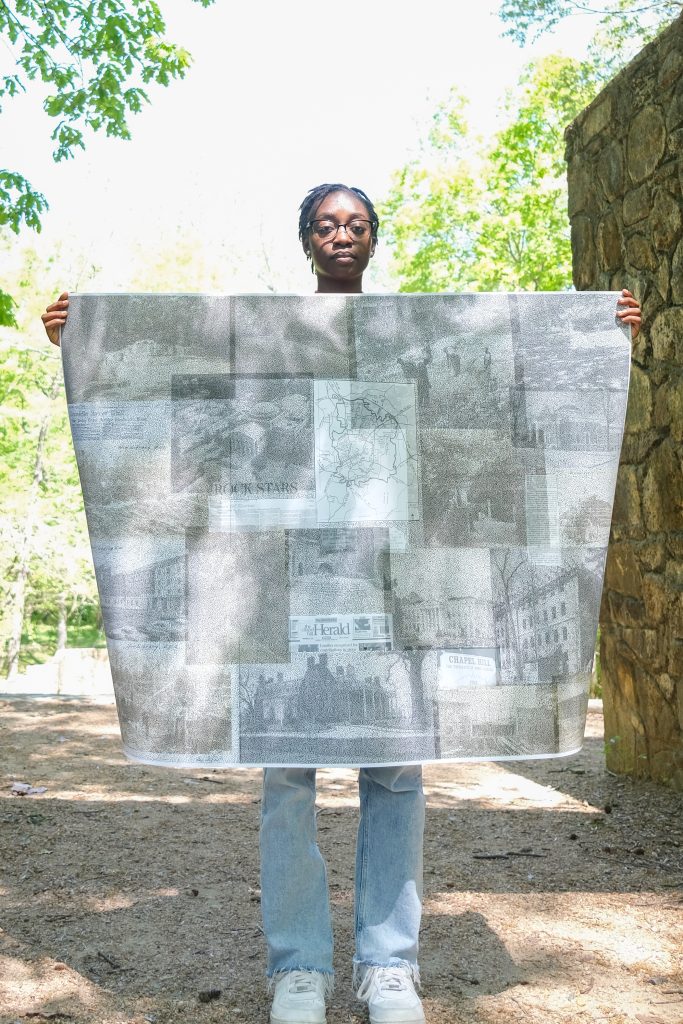
Fowota Mortoo and her 12-square-foot map of UNC. (Photo via the Wilson Library Student Artist Awards.)
The paper map layers archival photos and a hand-drawn maze, with the names and faces of the four families embedded on the specific spaces each were integral in creating. Unveiled at the Seymour Center this month, the UNC PhD student said she initially created the piece for Wilson Library’s Student Artist Awards, which allows students to use its historical and archival materials for a creative project.
“And so I eventually gathered archival photos, also engaged with some of the oral histories in the Jackson Center, to piece together what I refer to as a map in that it’s really about orienting us to those histories and putting a focus on stories that have often been excluded from the stories on campus.”
Eugene Farrar recorded the Blacknells’ story as part of From the Rock Wall, The Jackson Center’s living oral history archive for Black Chapel Hill and Carrboro. There, he recalls his uncle James Blacknell’s work for the university.
“You had to break rocks and small rocks and things like that to fit – like a puzzle really. It was a tough job, and that was his profession,” said Farrar. “He laid rocks at the University of North Carolina here in Chapel Hill, and of course, back in those days, they weren’t really paying you much.”
On the map, the Blacknell family is honored for their contributions to Morehead Planetarium and Science Center.
“Doing this rock work was something to behold,” continued Farrar. “My grandfather did [it]. My family and I’m sure probably some other people did it. But I do know my family laid most of the rock down on the university. And they’re still there.”
Mortoo’s piece also details the histories behind the Arboretum, Wilson Library, and many other university landmarks and spaces. Pat Jackson, a member of The Jackson Center’s Board of Directors, described the map as a way to show others what she has seen through growing up in the town.
“I’m a native of Chapel Hill, and all of the families that are featured in the map have been neighbors of mine, family members all throughout my life here in Chapel Hill,” Jackson said. “So I’m excited for all to be able to see what I’ve lived my years here in Chapel Hill.”
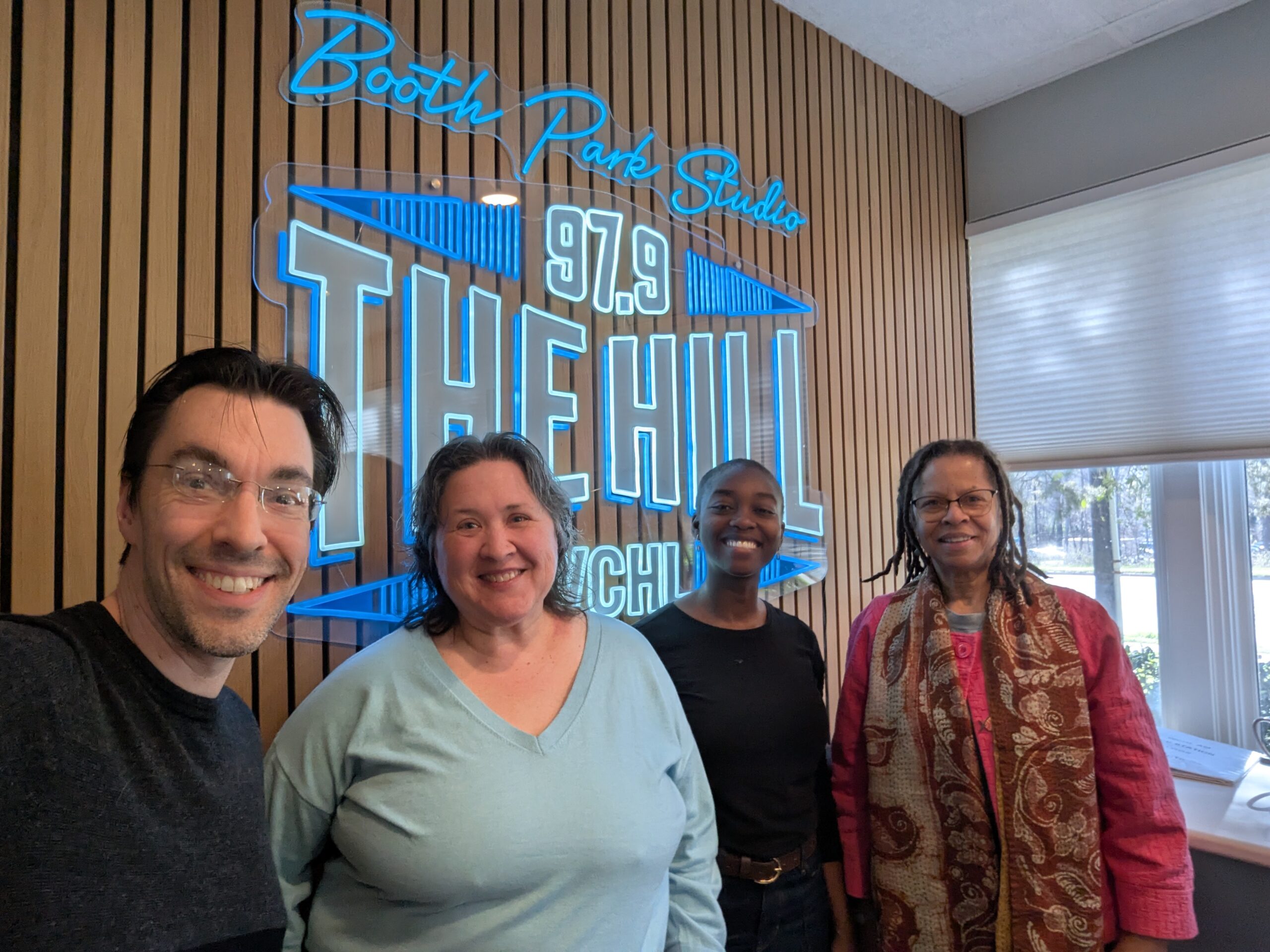
From left to right, 97.9 The Hill’s Aaron Keck stands with Kathryn Wall, Fowota Mortoo, and Pat Jackson on March 20.
Mortoo’s project fits into a wider community effort to honor those who built much of Chapel Hill and Carrboro. The Jackson Center’s Co-Director of Public History Kathryn Wall explained how the center is working to unveil Chapel Hill’s long-hidden history of Black builders with a memorial.
Wall described the future Builders Gateway as a physical counterpart to the more than 450 oral interviews currently preserved on the From the Rock Wall site. It will eventually be housed at Chapel Hill’s Masonic Lodge, and she said people can read about each family’s histories and contributions as they walk through it.
“There will be a number of construction materials built into [the memorial],” Wall added. “One of the things that was very important when we talked to community members and members of these builder families was that they wanted to see the kinds of materials, like Chatam Stone, that so many of the iconic buildings in Chapel Hill that were built by these families are created from.”
Explore more of Mortoo’s work here. To learn more about The Jackson Center’s work, click here.
Chapelboro.com does not charge subscription fees, and you can directly support our efforts in local journalism here. Want more of what you see on Chapelboro? Let us bring free local news and community information to you by signing up for our newsletter.

